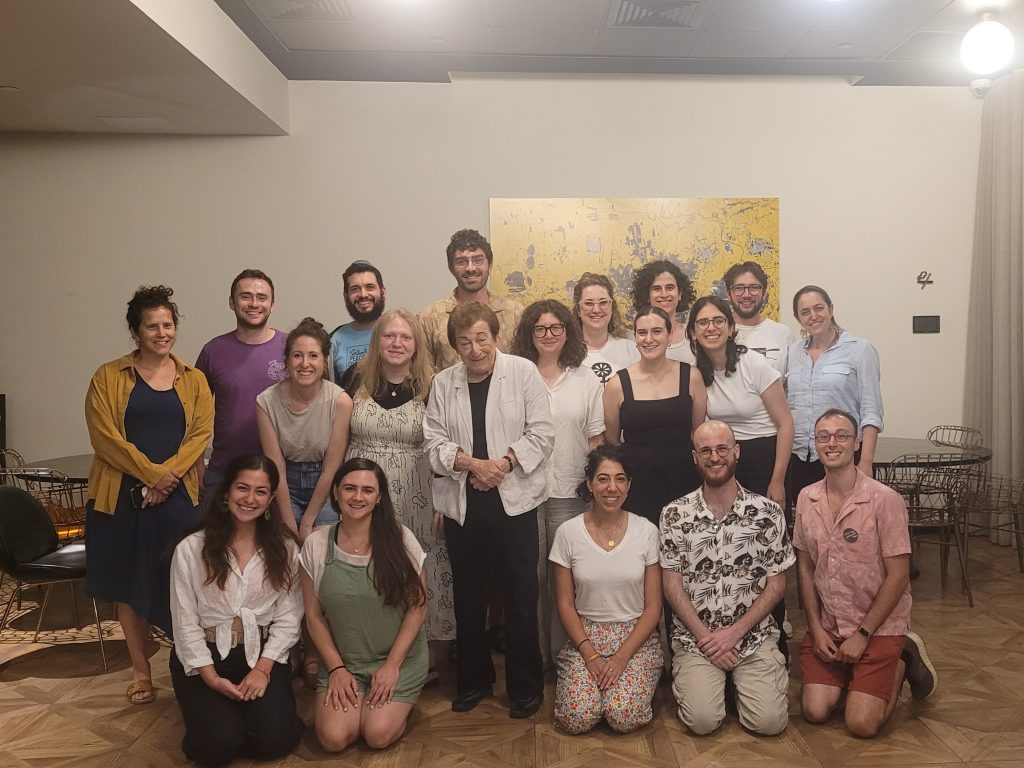
Naomi Chazan Fellows and staff with former NIF President Prof. Naomi Chazan.
 My name is Syvanne Avitzur, and I am a 2024 Naomi Chazan Fellow, a New Generations Leadership Council Member, and a newly appointed board member of the New Israel Fund of Canada.
My name is Syvanne Avitzur, and I am a 2024 Naomi Chazan Fellow, a New Generations Leadership Council Member, and a newly appointed board member of the New Israel Fund of Canada.
This summer, I visited Israel and the West Bank as part of the Naomi Chazan Fellowship, NIF’s global leadership program for young leaders in Australia, the UK, the US, and Canada. Fellows begin our year-long program by traveling to Israel-Palestine in order to engage with the incredible work of NIF grantees and activists on the ground, then return to our communities to share what we’ve learned.
Before embarking on this trip, my hope within the diaspora was admittedly low. For months I have been following the hostage families protesting on the streets of Jerusalem and Tel Aviv demanding a ceasefire-hostage deal from a government that neglects them and calls violent police on them, while using their unimaginable suffering to push an agenda for a never-ending, cruel, and inhumane war on Gaza. And for months I have witnessed this same joint hostage-ceasefire movement divided into two opposing camps in the diaspora with zero-sum narratives, despite our causes being entirely intertwined, our suffering entirely connected. The dehumanisation of millions of Palestinians and Israelis, of my family and my friends, has been painful to watch. So, I was eager to connect with passionate, human-centred individuals and learn from Palestinian and Jewish-Israeli activists whom I deeply admire.
During the eight-day trip, the thirteen Fellows and I met with various NIF grantees leading critical initiatives, such as:
- Tzedek Centers: Providing funding support for communities in the Gaza envelope and beyond, which were affected by the October 7 attack and deescalating Jewish-Palestinian/Arab tensions in mixed cities.
- Standing Together: Actively countering settlers sabotaging aid trucks to Gaza, offering protective presence in East Jerusalem, and fostering solidarity between Jewish-Israelis and Palestinian Citizens of Israel.
- Mehazkim and the Association for Civil Rights in Israel (ACRI): Doing the critical work of reducing polarization in Israeli society, building cohesion within the progressive movement, and providing legal support for vulnerable communities.
- Gisha and other partners: Addressing the humanitarian crisis in Gaza and providing relief in an unbearable situation.
- The Faithful Left: Promoting religion-based humanitarian work and equality for all under Israel’s control through a distinctly orthodox/traditional voice.

Image 1: A conversation with Standing Together founder Alon-Lee Green.
During the first days of my trip, I couldn’t help but visualize this work as one person struggling to push a boulder up a hill. Like in the Greek myth, the effort feels endless, and any progress is often undone.
But then I shared this imagery with an Israeli activist following a particularly difficult day spent visiting the southern city of Ofakim and an unrecognized Bedouin village in the Negev. Both were severely impacted by the October 7 attacks and aftermath. I felt particularly hopeless. The activist responded that it may often feel that way, but my analogy was incomplete. He emphasized the importance of solidarity and collaboration in the progressive movement.
Instead of one person, he suggested envisioning a collective, a community of people pushing the boulder together, tuning out the voices of dissuasion.
I found his response inspiring, but I hadn’t yet felt the impact of the collective myself. This idea of determined collective action was powerfully illustrated during one of our visits to the West Bank. We traveled to the South Hebron Hills, an area under Israeli control (Area C), with Breaking the Silence, an NIF grantee that collects testimonies from current and former IDF soldiers about their service in the occupied territories and Gaza. On that day, we visited Zanuta, a small village of about 250 people in the West Bank. In October, in retaliation for the events of October 7, settlers threatened the villagers with death if they did not leave, despite them having nothing to do with the Hamas attack. With no other option, the entire community evacuated, seeking temporary refuge in Area A of the West Bank. After they left, settlers looted the village, destroying homes and the school, leaving behind empty beer bottles, torn educational posters, and spray-painted Stars of David.

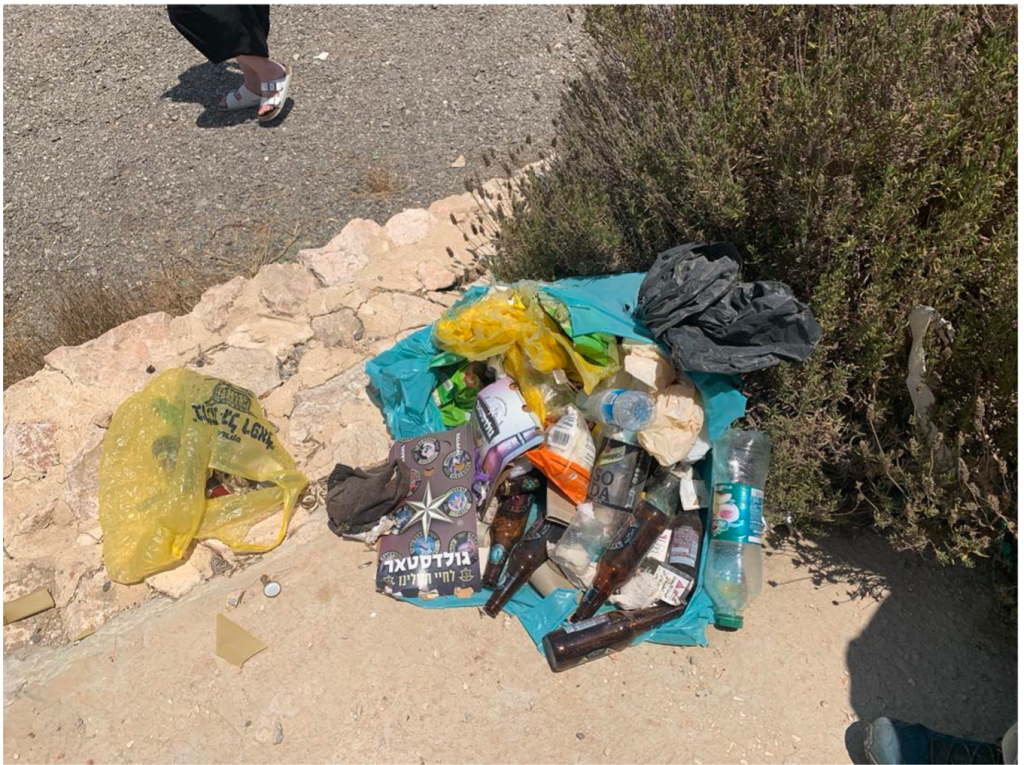
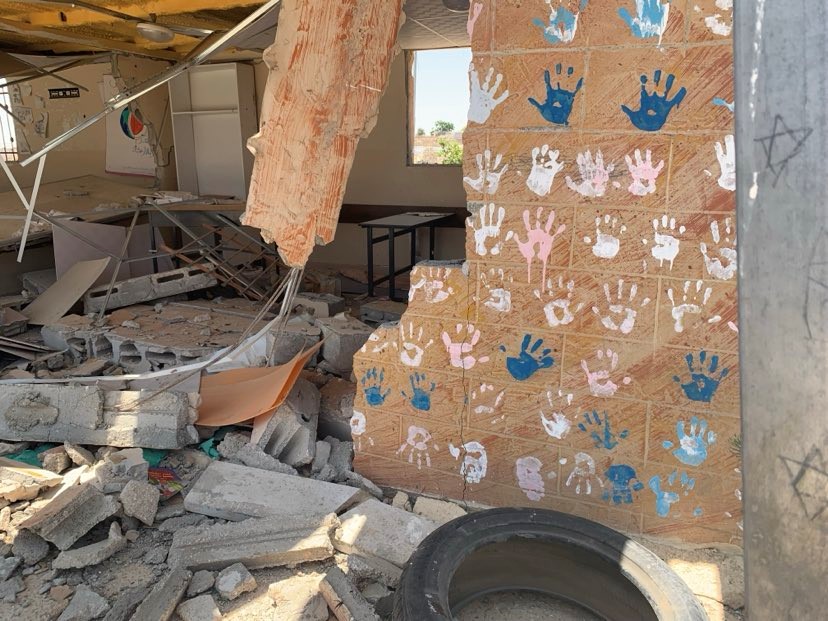
Images 2-4: The aftermath of settler-looted Zanuta.
As a Jew, an Israeli citizen, and a descendant of Holocaust survivors, witnessing an innocent village scapegoated for atrocities, and seeing a school — a symbol of learning and progress — destroyed, deeply affected me. The sight of torn books, a ravaged classroom, and hastily abandoned homes brought back painful memories of my own family’s history of hardship and trauma.

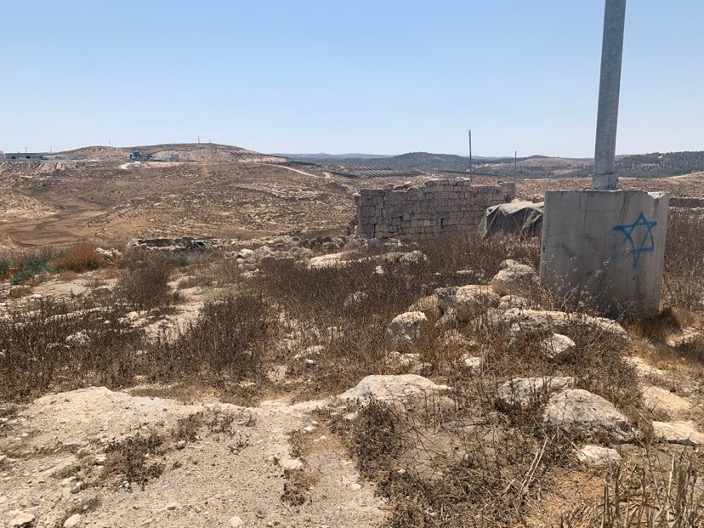
Images 5-6: More of settler-looted Zanuta.
Later that same day, we visited the West Bank Bedouin village of Umm al-Khair, which is also facing coordinated attacks from settlers and the military, breaking essential water infrastructure and demolishing 17 homes this summer alone. There, I spoke with community leaders, some of whom spoke fluent Hebrew from their time working in Israel. Two villagers shared how crucial it is to see each other as human beings, as neighbours, and as cousins. This sentiment resonated deeply with me and was reinforced a few days later when some of the fellows and I returned to Umm al-Khair for a protective presence shift with Rabbis for Human Rights. Protective presence involves Israelis and internationals going to Palestinian villages in the West Bank and East Jerusalem to deter violence by recording any potential attacks from settlers or the Israeli military.
In Umm al-Khair, I truly felt the power of collective solidarity and compassion. We played with the village children, drank tea together, and shared our thoughts about the ongoing situation. These moments of human connection and shared experience were incredibly meaningful and reinforced the importance of standing together in the face of adversity.

Image 7: Water pipe in Umm al-Khair broken by a neighbouring settler.
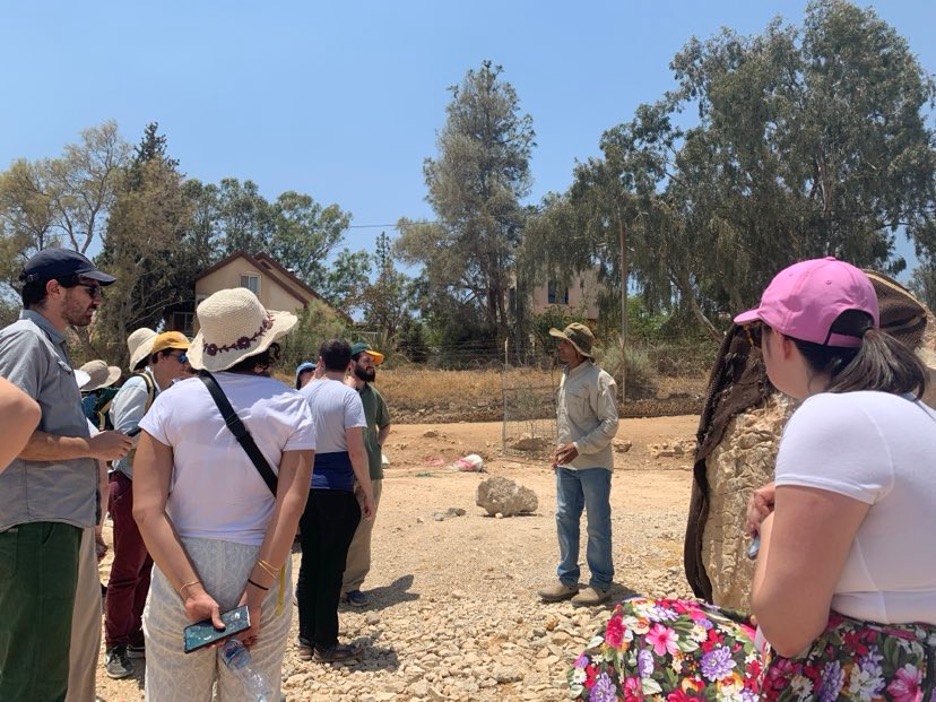
Image 8: Our Fellowship group learning about settler and military violence against Umm Al-Khair from a community leader.
Between Zanuta and Umm al-Khair, I saw two versions of Jewish and Palestinian interaction: one of violence and another of partnership.
Last week, I was relieved to see photos and articles of Zanuta villagers returning to their homes, ten months after being forced to leave, with Israeli and international activists by their side. Although the return is fraught with challenges and the future remains uncertain, the image of these villagers and activists working together to rebuild gives me hope.
It also brought to mind the memories of Israelis standing in solidarity with hostage families in Tel Aviv, demanding a hostage-ceasefire deal. These acts of solidarity, both in the West Bank and within Israel, were also reflected on a smaller scale in our fellowship group, comforting one another as we shared the difficulties our families in Israel were going through and the emotional hardships we endured during the trip.

Image 9: Hostage family-led protest in Dizengoff, Tel Aviv on July 13, 2024.
I left Canada with little hope, but I returned with a renewed sense of community and hope. There is so much we must accomplish in order to build a better future than the ones offered by Hamas, this Israeli government, and the settler movement. Finding community in one another, standing in solidarity with activists doing this critical work on the ground, and supporting Palestinians and Israelis that simply want better lives for their children, are all powerful places to start.
Join me and the other Canadian Fellows on September 9th as we share more insights and experiences from our trip to Israel-Palestine. Click here for more information and to register.
Commemorate a year since October 7th with us featuring Jewish and Palestinian voices of peace on either of these occasions: September 29th in Toronto and October 6th virtually.
